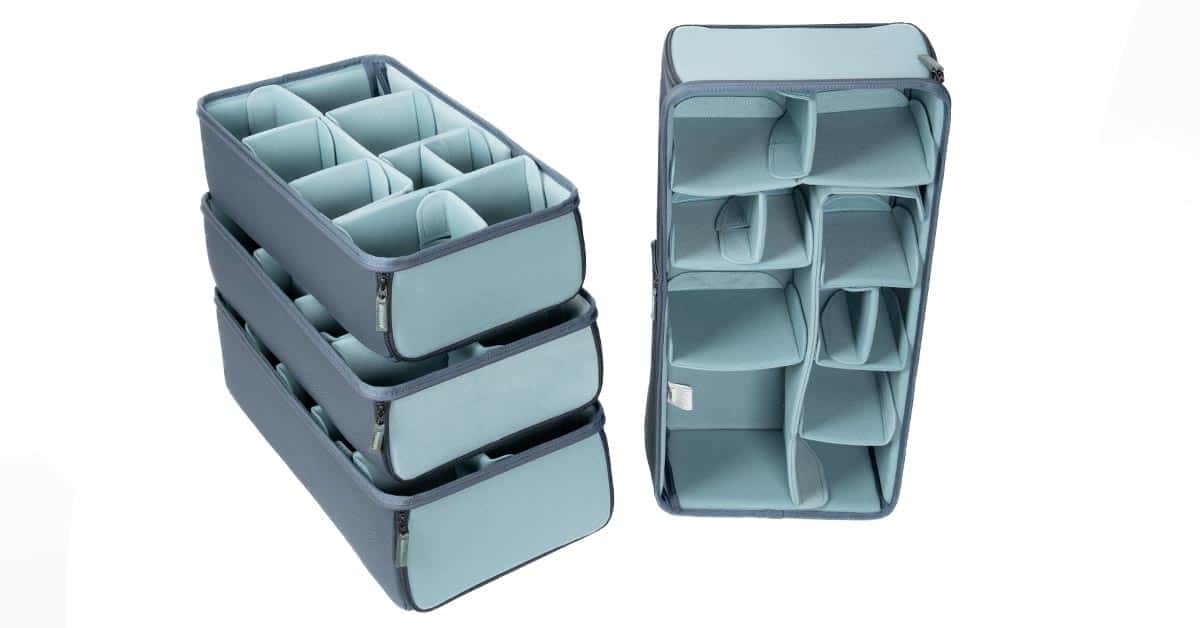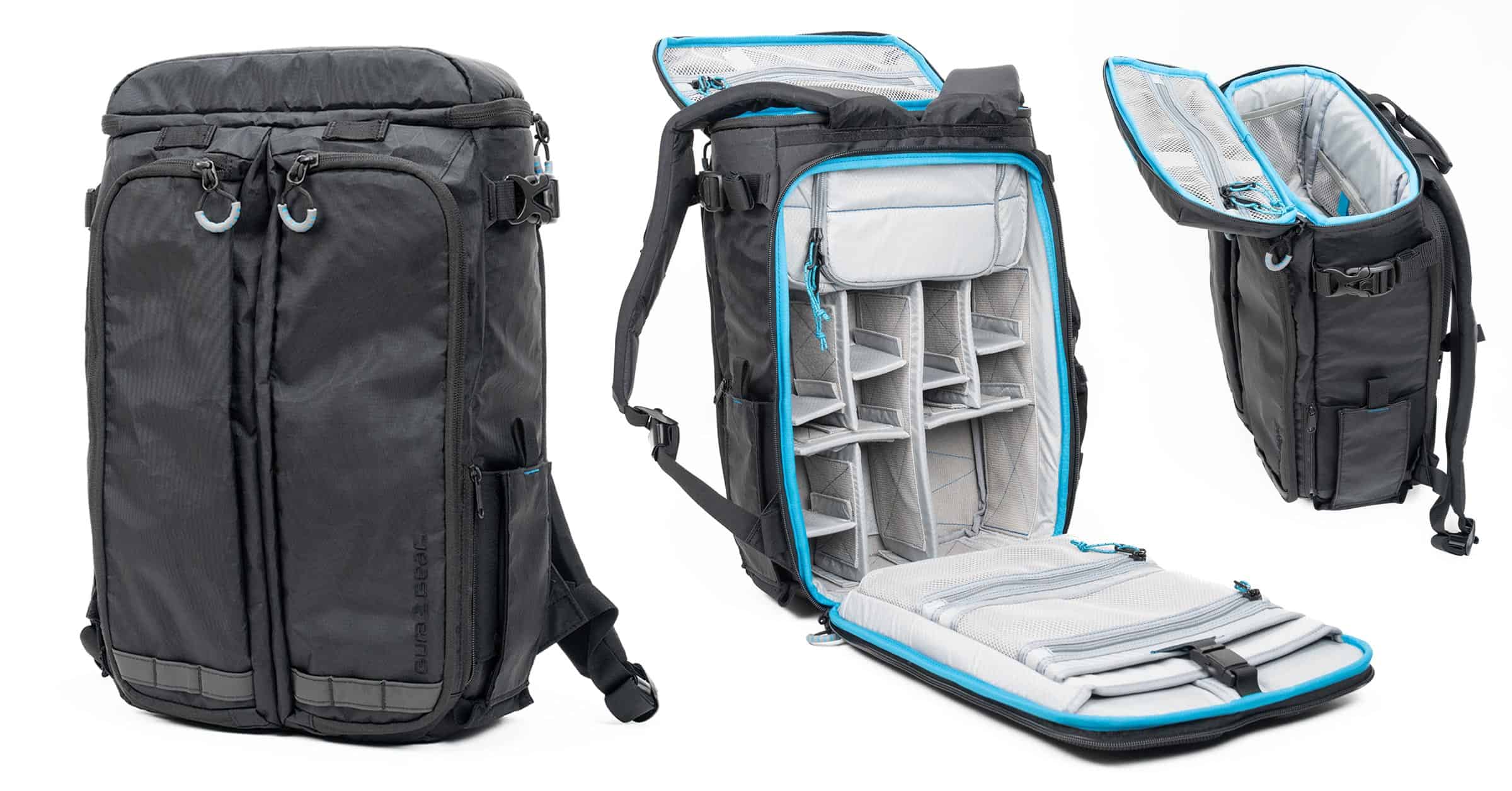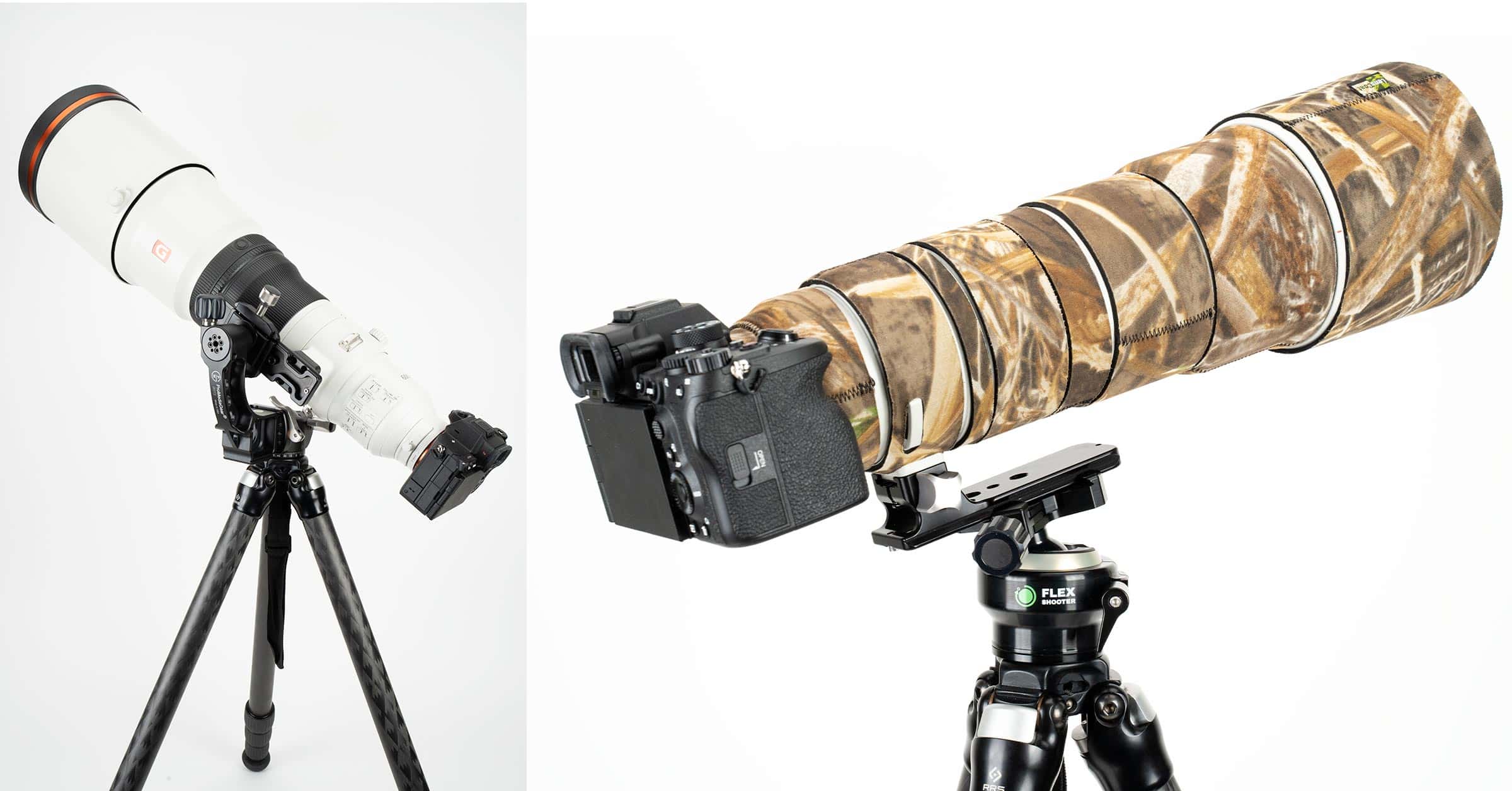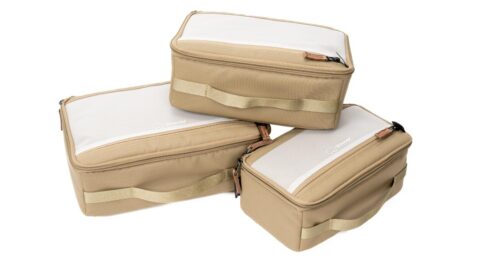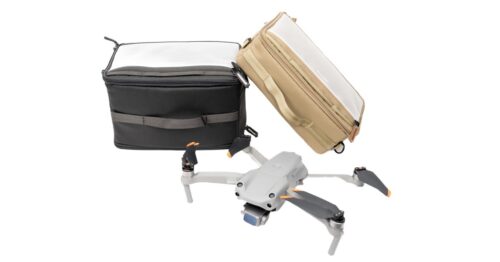Shimoda’s Core Units allow you to customize the volume of camera protection in your Shimoda camera bag to account for different days requiring different gear types. The new RST Core Units expand the already extensive Core Unit lineup with four new options that offer Rear, Side, and Top access to your gear-hence the RST moniker.
- L25 RST Core Unit – Designed for the Action X25.
- XL30 RST Core Unit – Designed for the Action X30 but also fits in larger packs.
- XL40 RST Core Unit – Designed for the Action X40 but also fits the Action X50 and Action X70 HD.
- XL50 RST Core Unit – Designed for the Action X50 but also fits in the Action X40 and X70 HD.

Disclaimer: Shimoda provided all four new RST Core Unit sizes so that I could update my review of the Action X series. Complete dimensions of the RST Core Units and comparisons to all other Core Units can be found in my dedicated Core Unit size guide.
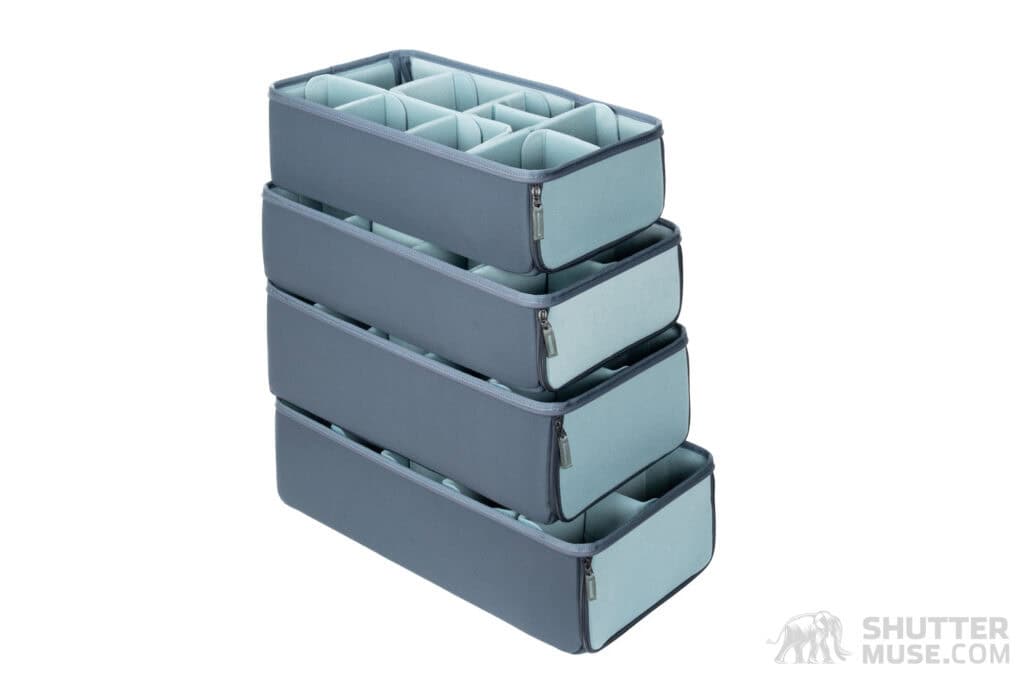
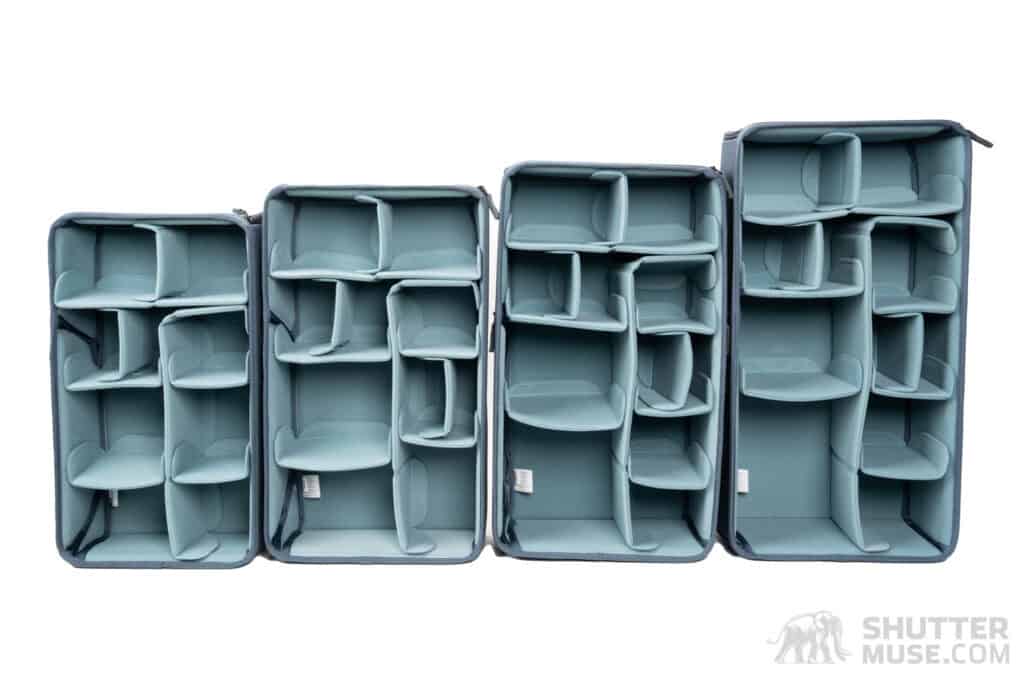
Table of Contents
What’s New With the RST?
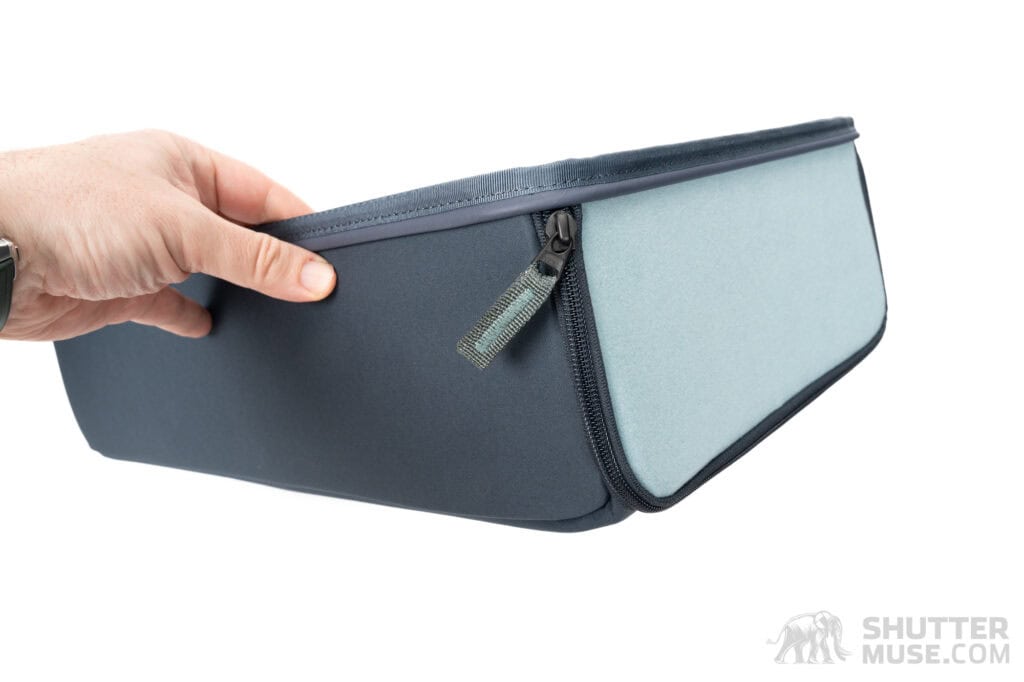
Rear and side access are standard features in the Core Unit lineup, so the headline feature of the new RST models is the zippered top access that allows extraction of a camera and mounted telephoto or super-telephoto lens from the roll-top of your Action X series camera bag. Top access to your telephoto lens has been possible with the Action X70 HD and the XXL DV Core Unit. With the introduction of the RST Core Units, this valuable feature for wildlife photographers has been made available for all sizes of Action X backpacks.
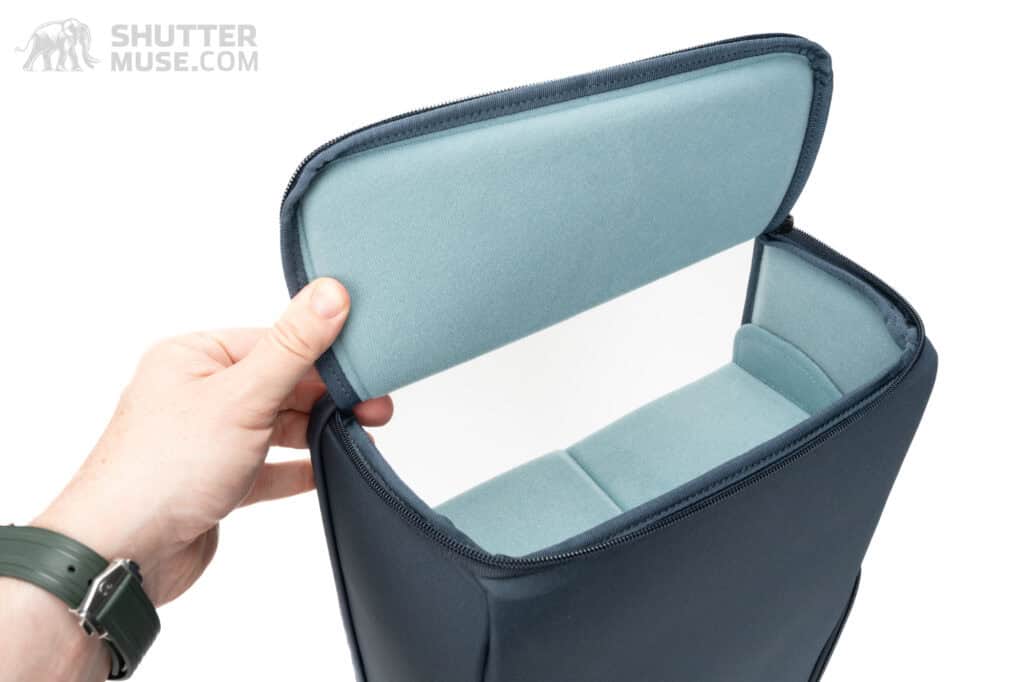
My in-depth review of the Shimoda Action X series was positive overall; however, I made one complaint, which, at the time, forced me to recommend pairing some of the Action X bags with a third-party accessory if you planned to use specific sizes of super-telephoto lenses. With the new RST Core Units launch, I’m happy that Shimoda has listened to its customers and solved the problem. In fact, they went one step further than I expected, but more on that in a moment.

RST Core Units for Action X40 and X50

The issue I had in my original Action X series review was that there were no Core Units for the Action X40 and Action X50 capable of holding a 400mm f/2.8 or a 600mm f/4 lens. The bags were large enough, but the Core Unit sizes for these bags topped out with the Large DSLR Core Unit, which wasn’t long enough for those monster lenses that are so popular with wildlife photographers. You could step up to the Action X70 HD backpack with its larger range of deeper DV Core Units, but that bag isn’t even close to being carry-on compliant with airlines, which left the traveling wildlife photographer in a quandary.
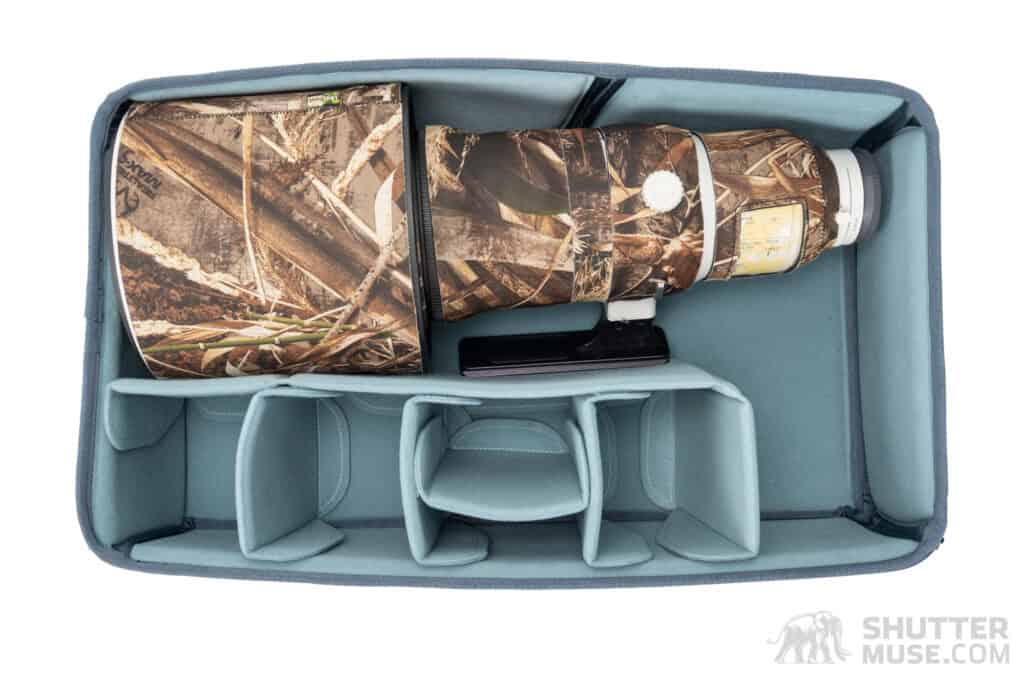
The new XL40 RST and XL50 RST Core Units are sized to fill the entire internal volume of the Action X40 and Action X50 backpacks, allowing you to carry a 400mm f/2.8 or 600mm f/4 lens in either bag and maximize camera carrying capacity for national and international air travel. The XL40 RST fits up to a mounted 400mm f/2.8 or unmounted 600mm f/4. The XL50 RST fits a mounted 600mm f/4. Moreover, the top access zipper allows vertical extraction of some other lenses with a mounted camera.

In my testing I found that the top opening of the XL40 RST and XL50 RST is not wide enough to extract a 400mm f/2.8 or 600mm f/4. These two new Core Units solve a problem in that you can now use an Action X40 or X50 to carry those lenses, but you must access them through the usual back panel opening. The top access is limited to lenses with a maximum lens hood diameter of around 5.75″. My Sony 300mm f/2.8 could be vertically extracted, as could my slimmer Sony 200-600mm, 400-800mm, Canon 200-800mm, and Nikon 180-600mm. If you want vertical extraction of a 400mm f/2.8 or 600mm f/4, you must use the X70 HD with the XXL DV Core Unit.
XL50 RST in Action X40
Though the XL50 RST is designed for the Action X50, I also tested it in the Action X40 and found it an excellent fit. The roll-top nature of the bag gives plenty of leeway. This is great for Action X40 owners who may want to carry a 600mm f/4 with an attached camera. Just so you know, though, if you do this, you push the Action X40 slightly beyond some international carry-on limits, so X40 owners may still be better with the XL40 RST that keeps it within those dimensions.
Alternatively, Action X40 owners may consider adding both an XL40 RST and an XL50 RST to their kits. Use the XL40 RST when traveling internationally with a 600mm f/4 with no body attached. Use the XL50 RST in the bag at home or traveling nationally with more lenient carry-on regulations. The same concept doesn’t work in reverse, though. An Action X50 is always a little too tall for some international carry-on regulations, even if you put the shorter XL40 RST in it because the bag’s internal frame sets its height.
Action X40 Versatility – A Winner
If I were choosing between the Action X40 and X50, it would be easy for me to opt for the Action X40. The only difference between the two bags is that the X50 is 1.1 inches taller. That extra height puts it outside the maximum bag height for carry-on with Air Canada, my most used airline, along with other Star Alliance partners. Now, with the introduction of the new RST Core Units, I can choose to use the larger XL50 RST Core Unit in the Action X40 when I’m not flying and want to leave a camera attached to my 600mm f/4. When flying, I can use the XL40 RST in the X40—the best of all worlds.
XL50 RST + Action X50 Air Travel Tip
If you’ve already got an Action X50, or that is the bag you want to buy because it has a longer torso length and you’re a tall human, and you want to pair it with the XL50 RST Core Unit, you will be beyond carry-on limits on some airlines. Many people travel this way with no issues. However, it’s worth noting that, should you get stopped at the gate and questioned about this, you can remove the Core Unit from the bag, slip it into its cover, and gate-check the empty backpack shell while carrying the Core Unit onto the plane. On its own, outside of the backpack’s shell, the XL50 RST will comply with many more (most) carry-on regulations. It’s a good trick to have in your back pocket if you’re an Action X50 user!
A Note On Lens Orientation
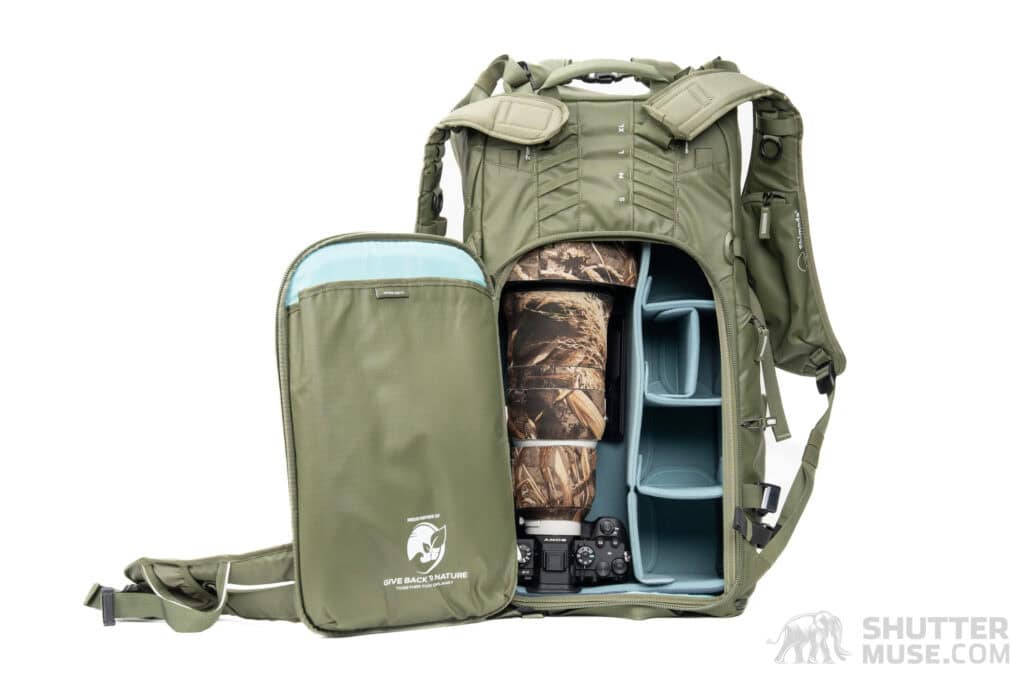
I place the camera at the bottom because, during extraction, I can put my hand around the thinnest part of the lens barrel to manipulate it. With the lens hood at the bottom, you have to pull on that, and I worry that repeatedly doing this may cause a problem. Placing the camera at the bottom also means that I can remove it from the telephoto lens if I need to use it with another lens. I can’t easily do that if it’s oriented the other way.
If you put the lens in the bag the other way around – hood down – you’ll see in the photos that the standard lens hood from a 600mm f/4 (and a 400mm f/2.8) protrudes slightly above the RST Core Unit’s edge. Due to the depth of the rear hatch section on the bag, though, this doesn’t mean that all of that is poking into your back. I have tried to illustrate this with an additional photo. In that second photo, you can see that once in the bag, the lens hood doesn’t stick up above the zipper line at all.


What you should be aware of, though, is that the hood pushes into the thickly padded laptop sleeve. With the lens hood of a 400mm f/2.8 or 600mm f/4 at the bottom of the bag, you can’t put a laptop in that rear laptop sleeve without it all feeling too tight. The solution is simple. Flip the lens the other way up. The lens hood is placed at the top, above the laptop sleeve. Alternatively, use the Action X’s second padded laptop sleeve in the front of the bag.
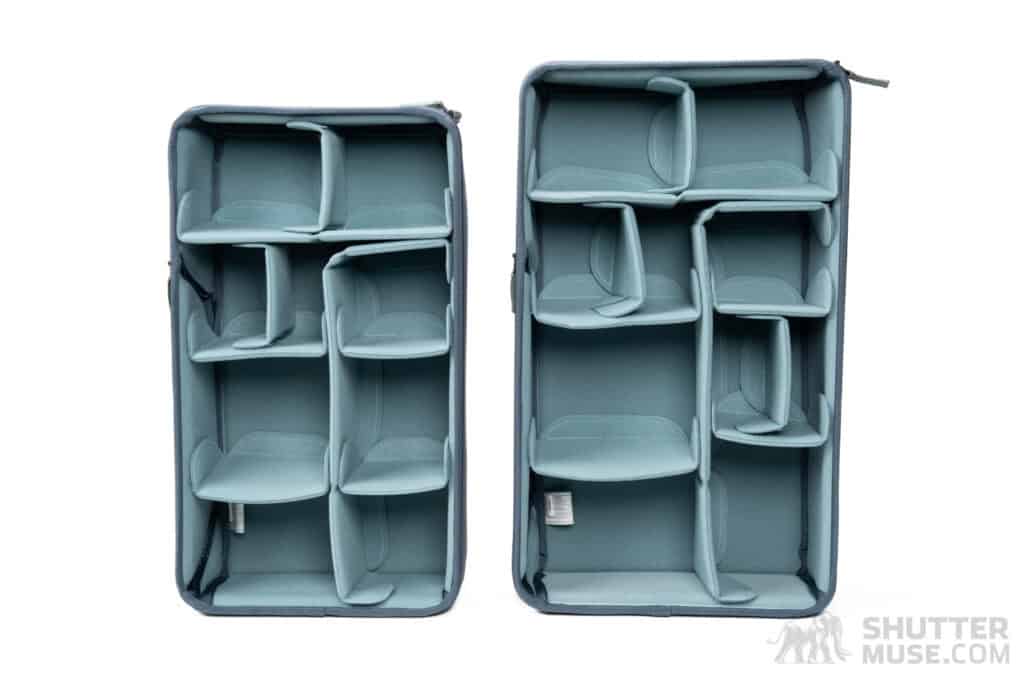
RST Core Units for Action X25 and X30

I’m pleased to be now able to carry my 600mm f/4 in an Action X40 or X50, but Shimoda went one step further and introduced RST Core Units designed for the smaller Action X25 and Action X30, too, with the L25 RST and XL30 RST Core Units. After playing around with these new RST Core Units for the past few months, I can see why they did it. These smaller L25 RST and XL30 RST Core Units are perfect for users of telephoto zoom lenses like the Sony 200-600mm, Sony 400-800mm, Nikon 180-600mm, and Canon 200-800mm, as well as lightweight telephoto primes like the Sigma 500mm f/6.3, Sony 300mm f/2.8, Nikon 600mm f/6.3 or Nikon 400mm f/4.5. This market segment is increasingly popular with the proliferation of cheaper super-telephoto zooms, and the new RST Core Units accommodate every option.
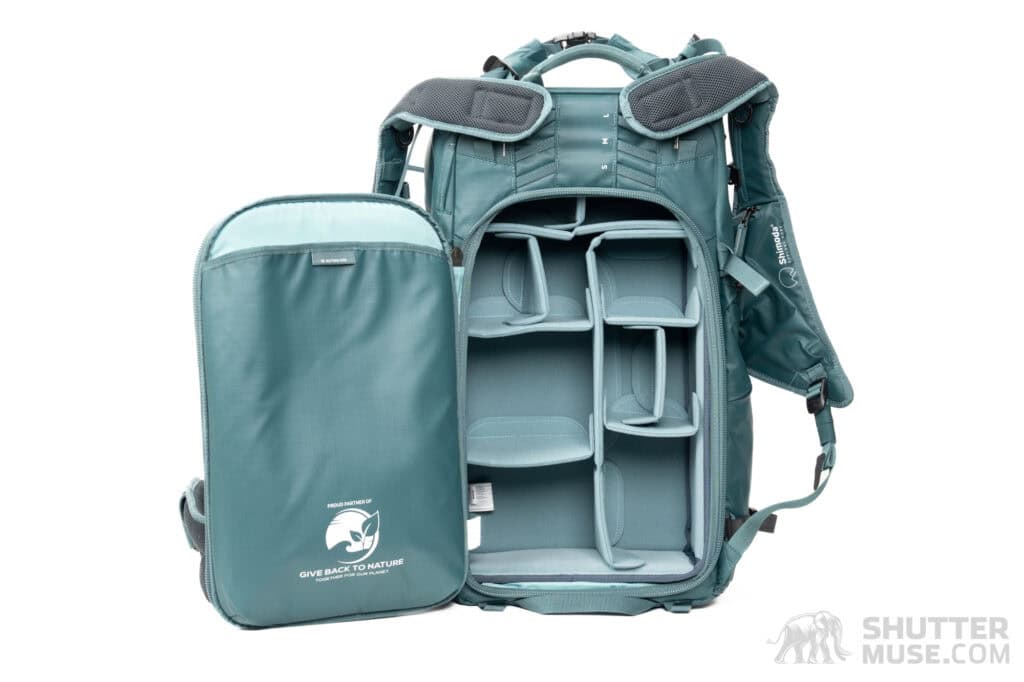
I have taken such a shine to the Action X25 with the new L25 RST Core Unit that I wrote an entire post about that combination and how well it works as a compact, lightweight backpack for wildlife photography. This new pairing has found a permanent place on my gear shelf alongside my larger Action X40 and Action X70 HD.
Conclusion
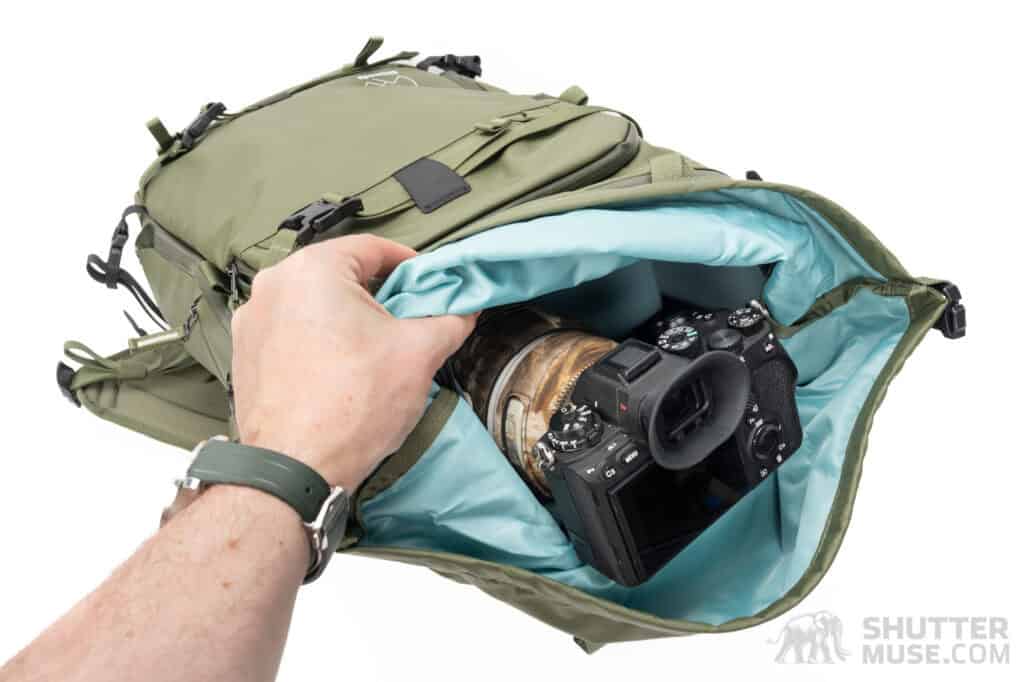
The Shimoda Action X v2 backpack system has been dramatically enhanced for telephoto lens users by adding the new, larger RST Core Units to the lineup. There’s no downside to this. Use the other 10+ Core Unit options if you don’t need these. On the other hand, if you’ve looked longingly at the comfort and rugged design of Shimoda’s Action X series in the past but never been able to buy one because it didn’t adequately accommodate your largest lenses, this is what you’ve been waiting for.
In particular, 400mm f/2.8 and 600mm f/4 lens users will be happy they can now choose to use the air travel-friendly Action X40 or Action X50 (with some airlines) instead of being limited to the huge Action X70 HD. Users of smaller telephoto lenses such as the Canon 200-800mm, Sony 200-600mm, Sony 400-800mm, or Nikon 180-600mm can now choose the small-but-mighty Action X25 for the ultimate compact, comfortable wildlife photography backpack.
Where to Buy (+ Save 10%)
Shimoda Designs has offered Shutter Muse readers a 10% discount on anything purchased through their online stores. US, Canadian, UK, French, or German residents should use the discount code ShutterMuse10 after clicking here to access the store. Australian readers should use the same code on the local Shimoda distributor’s site, Maxxum, instead.
It’s always appreciated when you use my links for your purchases. I recommend shopping directly with Shimoda, if you can, to take advantage of that 10% discount. However, using one of our other links is also appreciated if you are unable to do so.

